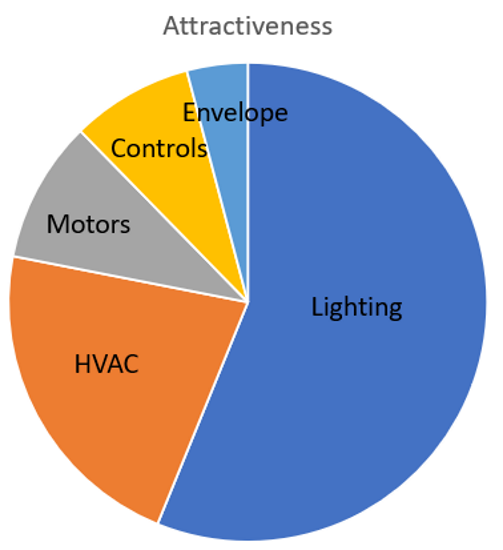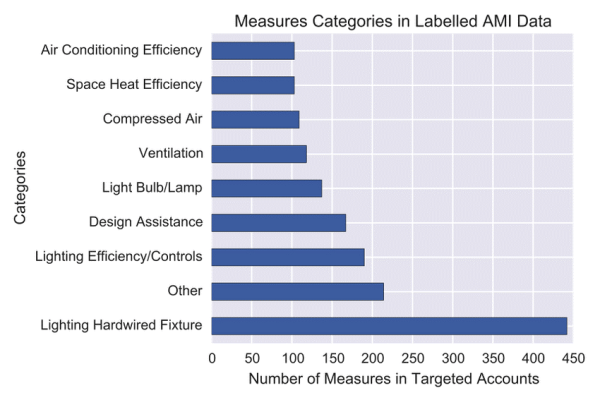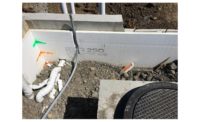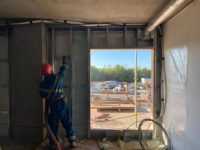Adventure starts with a first step. Whether it’s Frodo leaving the Shire, or the first step down the path to net zero, a first step needs to be taken.
Over time, we have segmented and prioritized the built environment, a needed first step if we are going to tackle the issue of reducing our environmental impact. These are lofty goals but science has delivered the needed justifications. It’s time for us to act.
Twenty-one percent of our produced energy is consumed by residences and 18% by industrial/commercial buildings. These are big numbers and to some degree, controllable. The Department of Energy and other influencers have focused on residential construction, primarily new construction. Building codes have increased the insulation requirements for the envelope in new construction and introduced the need for air barriers some 10 years ago. Utility incentive programs, the DOE and Energy Star programs have all created awareness and inclusion of lower energy demand in the residential sector—but what about the non-residential sector?
Where to begin?
Reducing Energy Consumption
From an energy conservation perspective, the chart above identifies the most common energy conservation measures and their relative impact on energy conservation. The financial paybacks for the four primary measures are typically less than seven years. For many years, the ESCO model guaranteed energy savings, and overall, Building Energy Engineering firms have focused on the “Big 4” and have enjoyed success at reducing energy consumption.
The whole building, whole community or whole city ventures proposed by the ESCO providers and Building Energy Engineering companies can be unattractive to owners due to cost, timeline, and implementation restraints. Let’s consider other options to address demand side management—the building envelope.

A Different Option
There is an opportunity to take a more reasonable first step down the road to decarbonization and net-zero energy offered by the building envelope. Let’s consider the findings of the DOE over the past 15 years. They conclude that 40 to 60% of HVAC energy cost is due to uncontrolled air leakage and based on that fact, ASHRAE 90.1 included the need for an air barrier in envelope design. The IBC and IEC codes adopted the requirement in 2012/2015 timeframe. As a result, the air barrier industry took flight and we now have a deep understanding of the need for, the how-to and verification of the effectiveness of the air barrier within the residential new construction market. As we developed an early understanding of how to measure, test and install air barriers, we created new technologies and measures, one being air leakage control assessment procedure.
ALCAP gathers all the identified air leakage points, adds the air leakage area together and generates an “equivalent leakage area.” Through on-site inspection and measurement, we now know how big the holes in our envelope are and where they are located. A calculation using EqLA can then be made to determine the fuel consumption required to heat or cool that much air. If we apply local energy costs, we can calculate financial paybacks and ROI. With the same data, we can calculate the environmental impact of heating or cooling that much air, and the savings of both dollars and carbon if we plug the holes.
Building Envelope Audits
The components of a robust building envelope audit include a qualified auditor, a simple input interface, an impact calculator and a report. Each needs to be considered before hiring a building envelope audit service provider. The auditor must be a credentialed individual who understands building science and has been trained (provide proof) to conduct building envelope audits. By limiting the scope of understanding to air leakage associated with the building envelope, we open the potential labor pool to more individuals. The heavy lifting of HVAC engineering, whole building energy analysis and forensic investigations is left to others while we seek to identify and quantify the unintended holes in the walls, roof and foundation. By keeping it simple, we make entry into the energy conservation game and participation in the carbon conversation attractive for many and not the exclusive domain of the few.
 Chart above was recreated to reflect in simple terms the top 5 and relative position of the key Energy Conservation Measures targeted by ESCO's Publication - "Predicting success of energy savings interventions and industry type using smart meter and retrofit data from thousands of non-residential buildings" ACM Buildsys 2017 conference, Deft Netherlands.
Chart above was recreated to reflect in simple terms the top 5 and relative position of the key Energy Conservation Measures targeted by ESCO's Publication - "Predicting success of energy savings interventions and industry type using smart meter and retrofit data from thousands of non-residential buildings" ACM Buildsys 2017 conference, Deft Netherlands. The auditor needs to measure and note holes with some form of permanent device. Those under the age of 50 will immediately look to a tablet or some cloud-based device. It’s been my experience that Wi-Fi connectivity is limited when we access the bowels of buildings and remote locations. Regardless of the claims made by carriers, I still get dropped calls, and an auditor can’t tolerate inconsistent connectivity. I suggest the interface be simple and effective—a printed form and a pencil. Notes are simple and concise, photos are used to illustrate the written observations and the record is permanent—with no monthly fees or contracts.
The calculator is the heart of the audit. There are a number of public domain, free calculators available, but they have substantial limitations—including accuracy. Whatever your role in the process, confirm the calculator used to produce potential impact data and conclusions is up to date, was developed by reputable agencies and has a successful use history.
The report itself needs to be clear, concise and a simple presentation of the data and impacts. Present the data in its simplest visual form, not a few cells from a spreadsheet. The report must include key measurements, assumptions, cost information and all sources of information and data. The data from other sources needs to be from local sources—not a national average. There should be two currencies, money and environmental impact, expressed in a number of ways. Take the time to question various sources of information. The report should contain a prioritized list of energy conservation measures and the construction specification for each. The construction documents provide an avenue for speedy implementation of the items identified in the audit.
The need and justification for the first step towards our energy security and a healthier planet are firmly in place, the technology is well established and the manpower to deliver audits is being developed. It’s time to take the first steps and become part of the carbon conversation today.





Report Abusive Comment